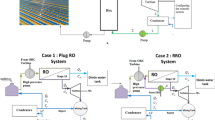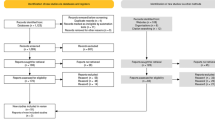Abstract
A reverse osmosis (RO) desalination system coupled with tidal energy is proposed. The mechanical energy produced by the tidal energy through hydraulic turbine is directly used to drive the RO unit. The system performances and the water cost of the conventional and tidal energy RO systems are compared. It is found that the proposed tidal energy RO system can save water cost in the range of 31.0%-41.7% in comparison with the conventional RO system. There is an optimum feed pressure that leads to the lowest water cost. The tidal RO system can save more costs at a high feed pressure or a high water recovery rate. The optimum feed pressure of the tidal energy RO system is higher than that of the conventional RO system. The longer lifetime of the tidal energy RO system can save even more water cost. When the site development cost rate is lower than 40%, the water cost of the tidal energy RO system will be lower than that of the conventional RO system. The proposed technology will be an effective alternative desalination method in the future.
Similar content being viewed by others
References
Will M, Klinko K. Optimization of seawater RO systems design. Desalination, 2005, 173(1): 1–12
He W, Wang Y, Shaheed M H. Stand–alone seawater RO (reverse osmosis) desalination powered by PV (photovoltaic) and PRO (pressure retarded osmosis). Energy, 2015, 86: 423–435
Vince F, Marechal F, Aoustin E, Bréant P. Multi-objective optimization of RO desalination plants. Desalination, 2008, 222 (1–3): 96–118
Malek A, Hawlader M N A, Ho J C. A lumped transport parameter approach in predicting B10 RO permeator performance. Desalination, 1994, 99(1): 19–38
DOW. Design a reverse osmosis system: design equations and parameters. Technical Manual, 2006
Marcovecchio MG, Aguirre P A, Scenna N J. Global optimal design of reverse osmosis networks for seawater desalination: modeling and algorithm. Desalination, 2005, 184 (1–3): 259–271
Lu Y Y, Hua Y D, Zhang X L,Wu L Y, Liu Q Z. Optimum design of reverse osmosis system under different feed concentration and product specification. Journal of Membrane Science, 2007, 287(2): 219–229
Malek A, Hawlader M N A, Ho J C. Design and economics of RO seawater desalination. Desalination, 1996, 105(3): 245–261
Oh H J, Hwang T M, Lee S. A simplified simulation model of RO systems for seawater desalination. Desalination, 2009, 238(1–3): 128–139
Bouhelal O K, Merrouch R, Zejli D. Costs investigation of coupling an RO desalination system with a combined cycle power plant, using DEEP code. Desalination, 2004, 165(1–3): 251–257
Nisan S, Benzarti N. A comprehensive economic evaluation of integrated desalination systems using fossil fuelled and nuclear energies and including their environmental costs. Desalination, 2008, 229(1–3): 125–146
Kosmadakis G, Manolakos D, Kyritsis S, Papadakis G. Economic assessment of a two-stage solar organic Rankine cycle for reverse osmosis desalination. Renewable Energy, 2009, 34(6): 1579–1586
Khalifa A J N. Evaluation of different hybrid power scenarios to reverse osmosis (RO) desalination units in isolated areas in Iraq. Energy for Sustainable Development, 2011, 15(1): 49–54
Iaquaniello G, Salladini A, Mari A, Mabrouk A A, Fath H E S. Concentrating solar power (CSP) system integrated with MED-RO hybrid desalination. Desalination, 2014, 336(1): 121–128
Loutatidou S, Arafat H A. Techno-economic analysis of MED and RO desalination powered by low-enthalpy geothermal energy. Desalination, 2015, 365: 277–292
Caldera U, Bogdanov D, Breyer C. Local cost of seawater RO desalination based on solar PV and wind energy: a global estimate. Desalination, 2016, 385: 207–216
Acknowledgments
This work was supported by the Key Laboratory of Ocean Renewable Energy and Sea Water Desalination of Science and Technology Special Project of Zhanjiang City of China (2013 A06008), the Science and Technology Project of Guangdong Province of China (2011B010100033), and the Science and Technology Development Project in Ocean and Fishery of Guangdong Province of China (A201301D01).
Author information
Authors and Affiliations
Corresponding author
Additional information
This work is carried out during the first author’s visiting appointment at the University of Missouri.
Rights and permissions
About this article
Cite this article
Ling, C., Wang, Y., Min, C. et al. Economic evaluation of reverse osmosis desalination system coupled with tidal energy. Front. Energy 12, 297–304 (2018). https://doi.org/10.1007/s11708-017-0478-2
Received:
Accepted:
Published:
Issue Date:
DOI: https://doi.org/10.1007/s11708-017-0478-2




